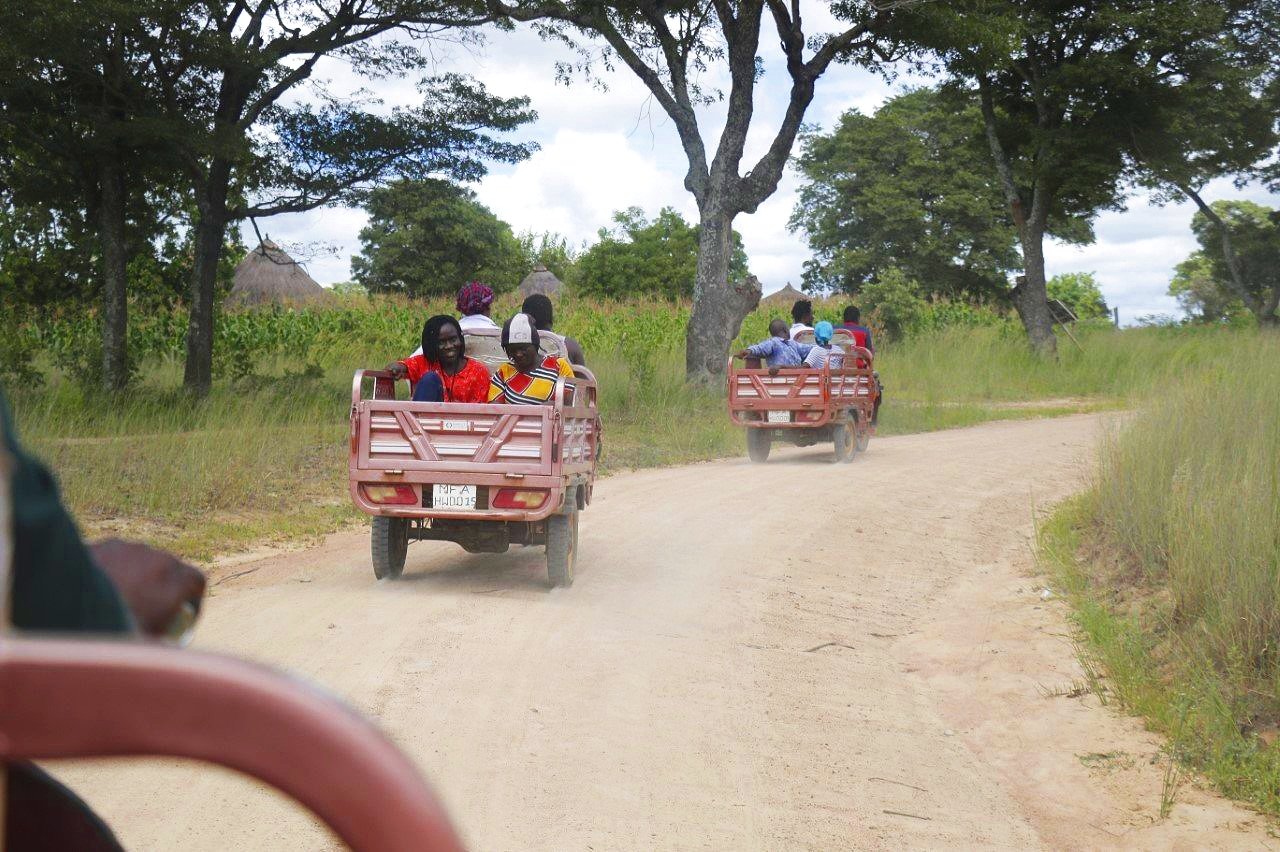THE MOBILITY CRISIS
Infrastructure and transport remain huge obstacles for many parts of Sub-Saharan Africa.
Rural farmers are often far away from main transport roads and suffer huge costs in both time and finances to get their goods to the market.
Women spend hours walking, preventing their access to education, healthcare, social services and other economic activities.

THE SOLUTION
Clean energy & electric vehicles
With the advent of the revolution in renewable energy and enormous global investment in electric transport, there is no reason the world’s poorest people should be bypassed. The UN Inter Governmental Panel on Climate Change has already acknowledged the urgent need for countries to transition from fossil fuel to green technology. If we are to succeed in reducing global warming, we need to make sure that transition happens in both rich and poor countries.
In many parts of rural Africa, neither regular supplies of energy nor petrol are available. This means most transport is expensive, often unreliable and doesn’t reach many rural off-road areas. Yet the growing availability of low-cost renewable energy, along with the huge investment in battery technology to drive vehicles, means we have the potential to transform rural areas. Like with the advent of digital technology, Africa can leapfrog its development to benefit from these new technological opportunities.
Electrification can help stimulate growth in small- and medium-sized enterprises, which suffer disproportionately when power is expensive or unreliable.
This industry – and especially small-scale power generation like rooftop solar panels and green mini-grids – has the potential to power African employment growth. AfDB estimates that roughly 40% of the continent’s new connections – 75 million households – will need to come from off-grid solutions.
Off-grid solutions would also enable the launch of new businesses, especially in agriculture, and increase ability to mechanise transport, as well as other productive tools.
While investment in decentralized renewables in Africa is increasing, more than 600 million people in Sub-Saharan Africa still lack access to electricity
Charging station funded by Australian Direct Aid Programme 2023
Why women?
Distances to access water, energy, fuel wood and transportation overburdens rural women, constrain their time, their mobility, therefore limiting their access to resources, markets and services, de facto limiting their productivity.
One estimate suggests that some 40 billion hours a year are spent collecting water in sub-Saharan Africa (UN Women, 2015).
Women spend between 15 to 22% of their time on domestic and reproductive unpaid tasks, which is 3 to 7 times more than men, this is equivalent to adding 8 to 10 hours more per week of work than men (CGAs and World Bank gender database). Such additional time is higher in rural areas because of the long time spent collecting water, fuel wood and preparing food.
Lilian Magodi, 2023Women, Power, Mobility Art Exhibition 2023: Disrupting the image of a rural women travelling
Sub-Saharan Africa
While roads are critical, so is the availability of transport. Transport in Africa is very costly to use, not only because of slow travel times due to the poor state of roads, but because of ‘non-physical’ transport costs related to delays, poor competition in the transport industry leading to higher prices, and a dependency on fossil fuels. It is estimated that moving goods can be 2-3 times higher than in other more developed parts of the world.
Beyond the classified network of primary and secondary roads, there is a vast unclassified network of tracks providing varying degrees of service to rural areas. Fewer than 40 percent of rural Africans live within two kilometers of an all-season road. There is evidence that physical isolation is preventing large areas of the continent from reaching their true agricultural potential and increasing economic activity.
Southern Africa – SADC is home to 300 million people.
Agriculture is central to fostering economic growth, reducing poverty, and improving food security in the Southern African region.
More than 70 percent of the rural population depends on agriculture for their livelihoods but have no way to transport it. Thus, regional economic growth has been constrained by poor performance in the agriculture sector.




